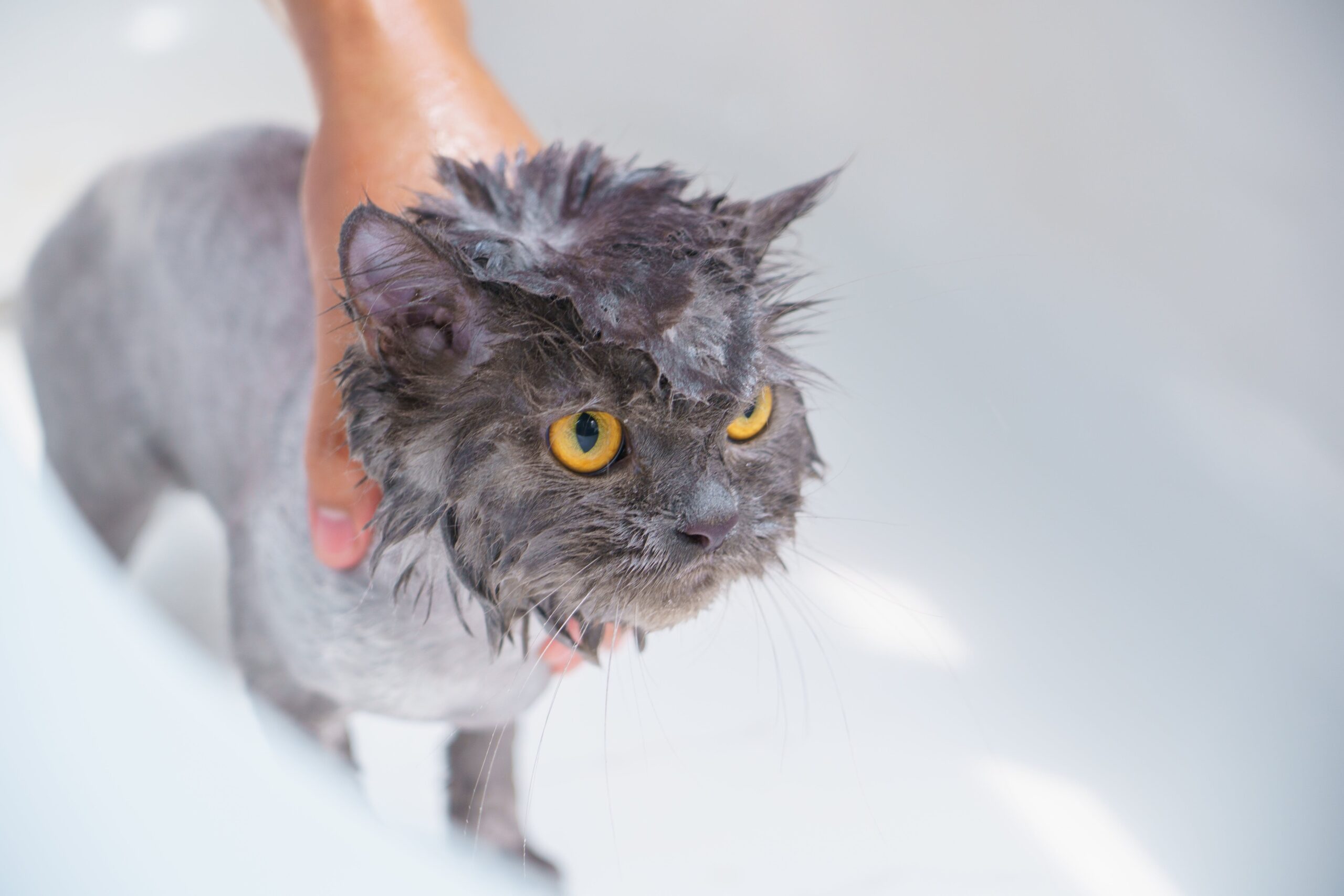Cats, known for their meticulous grooming habits, often raise the question: is it necessary to give them a bath? While cats are generally adept at self-cleaning, there are instances when a bath becomes essential for their health and well-being. In this comprehensive guide, we will explore the factors influencing the decision to bathe a cat, considerations for cat hygiene, and best practices in cat care. Throughout the article, we’ll emphasize the importance of pet care and delve into the nuances of maintaining optimal cat hygiene.
When is Bathing Necessary?
While cats are excellent self-groomers, there are situations where a bath becomes imperative for their health:
- Medical Conditions: Cats with certain skin conditions, allergies, or parasites may benefit from medicated baths prescribed by a veterinarian.
- Long-Haired Breeds: Long-haired breeds, such as Persians or Maine Coons, may require occasional baths to prevent matting and hairballs.
- Senior Cats: Older cats may struggle with grooming due to arthritis or other health issues, making them candidates for gentle, assisted baths.
- Accidents or Injuries: If a cat gets into a sticky or toxic substance, a bath may be necessary to prevent ingestion during grooming.
- Foul Odors: Cats that have encountered foul-smelling substances or have difficulty grooming themselves may benefit from a bath.
- Introduction to Bathing: Introducing kittens to bathing at an early age can make the process less stressful for both the cat and the owner.
Considerations Before Bathing Your Cat
Before deciding to give your cat a bath, consider the following factors:
- Cat’s Temperament: Some cats tolerate water and bathing better than others. Understanding your cat’s temperament can help determine the best approach.
- Frequency: Cats generally do not need frequent baths. Over-bathing can strip their fur of essential oils, leading to skin dryness.
- Use of Cat-Friendly Products: Choose cat-friendly shampoos specifically formulated for feline skin. Avoid using human products, as they can be harsh and cause skin irritation.
- Preparation: Have all necessary supplies ready before beginning the bathing process. This includes cat shampoo, towels, a non-slip mat, and a gentle approach.
- Trimming Claws: Trimming your cat’s claws before a bath can prevent scratches and make the experience less stressful.
Best Practices for Cat Bathing
When the decision to bathe your cat is made, following best practices ensures a smoother experience for both you and your feline friend:
- Positive Reinforcement: Use treats and praise to create positive associations with the bathing process. Reward your cat before, during, and after the bath.
- Slow Introduction: Gradually introduce your cat to water. Start by letting them explore an empty bathtub, then add a small amount of water over time.
- Gentle Handling: Handle your cat gently during the bath, speaking in soothing tones. Use slow and deliberate movements to minimize stress.
- Avoid Face and Ears: Cats are sensitive to water near their face and ears. Avoid wetting these areas as much as possible to reduce discomfort.
- Rinse Thoroughly: Ensure all soap is rinsed from your cat’s fur, as leftover residue can cause skin irritation.
- Warm Environment: Maintain a warm room temperature, and use lukewarm water to prevent your cat from getting too cold during the bath.
- Drying Process: Use absorbent towels to gently dry your cat after the bath. If your cat tolerates it, a low-heat blow dryer on the cool setting can be used at a safe distance.
Alternatives to Traditional Baths
For cats that vehemently resist baths, alternative methods can be employed to maintain their hygiene:
- Waterless Shampoos: Waterless shampoos designed for cats can be applied and massaged into the fur, eliminating the need for a traditional bath.
- Cat Wipes: Specially formulated cat wipes are available for spot cleaning and freshening your cat’s coat without the need for water.
- Professional Grooming Services: If your cat is particularly challenging, seeking the services of a professional groomer experienced in handling cats can be a less stressful option.
Cat Hygiene Beyond Bathing
While bathing is a component of cat hygiene, there are other essential aspects to consider:
- Oral Care: Dental health is crucial for cats. Regular tooth brushing, dental treats, and vet-approved dental diets can contribute to overall oral hygiene.
- Ear Cleaning: Check your cat’s ears for dirt or wax regularly. Use cat-friendly ear cleaning solutions and cotton balls to gently clean the ears if needed.
- Nail Trimming: Regular nail trims are essential to prevent overgrowth and potential injuries. Use cat-specific nail clippers and consult with your vet on proper techniques.
- Flea and Parasite Control: Maintain a consistent flea and parasite prevention routine, as infestations can lead to discomfort and skin issues.
- Proper Nutrition: A balanced and nutritious diet is fundamental to cat care. Quality cat food supports healthy skin and coat, contributing to overall feline well-being.
In the ongoing debate of whether to bathe a cat, the answer lies in individual circumstances. Understanding the nuances of cat grooming habits, the necessity of bathing in certain situations, and best practices in cat care contribute to maintaining optimal feline hygiene. Whether opting for traditional baths, alternative cleaning methods, or seeking professional grooming services, the key is to prioritize the well-being and comfort of your feline companion. By incorporating these considerations into your cat care routine, you can strike a balance between respecting your cat’s natural grooming instincts and addressing their specific hygiene needs.

